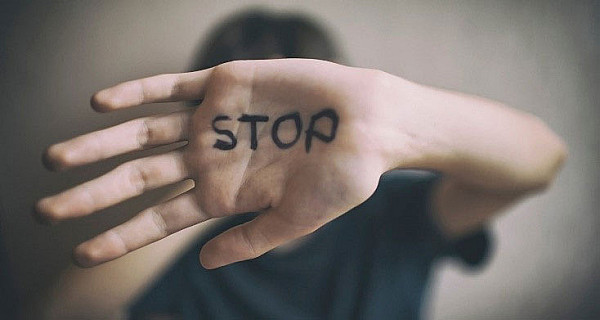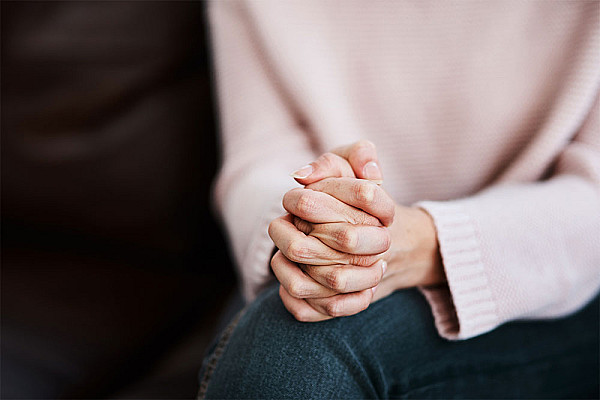Understanding The Domestic Abuse Act 2021
 Domestic abuse is a term that encompasses various behaviours aimed at controlling, manipulating, or harming someone within an intimate or familial relationship. If you're unsure whether you or someone you know is experiencing domestic abuse, it can be helpful to refer to the legal definition in the UK Domestic Abuse Act 2021. You can read the full legislation here.
Domestic abuse is a term that encompasses various behaviours aimed at controlling, manipulating, or harming someone within an intimate or familial relationship. If you're unsure whether you or someone you know is experiencing domestic abuse, it can be helpful to refer to the legal definition in the UK Domestic Abuse Act 2021. You can read the full legislation here.
Under this Act, domestic abuse is defined as any abusive behaviour between individuals aged 16 or older who are personally connected. This includes current or former intimate partners, family members, or anyone involved in an intimate or familial relationship.
Forms Of Domestic Abuse
Physical or Sexual Abuse: Any form of physical violence or unwanted sexual activity, including hitting, slapping, pushing, or any act of sexual coercion or assault.
Violent or Threatening Behaviour: Acts or words intended to intimidate, control, or harm. This can include verbal threats, intimidation, or physical acts designed to instil fear.
Controlling or Coercive Behaviour: Manipulative tactics used to restrict or dictate someone’s actions, decisions, or freedom through threats, isolation, or emotional pressure.
Economic Abuse: Controlling or restricting someone’s financial independence, such as limiting access to money, preventing them from working, or controlling their financial decisions.
Psychological / Emotional Abuse: Behaviours that cause emotional harm, including constant criticism, humiliation, isolation from support networks, or undermining someone's self-worth.
Honour-Based Violence (HBV): Acts of violence or abuse committed in the name of 'honour', often against individuals perceived to have brought shame to their family or community. This can include physical violence, forced marriage, or even threats to life.
Forced Marriage: A situation where one or both parties are coerced into marriage against their will, often involving physical threats, emotional pressure, or deceit. Forced marriage is illegal under UK law.
Female Genital Mutilation (FGM): The partial or total removal of external female genitalia for non-medical reasons. This harmful practice is illegal in the UK and is considered a severe form of abuse.
CPCA: A Parent or Carer experiencing Child to Parent Carer Abuse
Stalking: Persistent, unwanted, and intrusive behaviour that causes distress and fear. In a domestic abuse context, stalking can involve repeated following, monitoring, or harassing the victim in ways that undermine their safety and well-being.
Examples of stalking behaviour include:
• Repeatedly following the victim.
• Monitoring their movements or communications.
• Sending excessive, unwanted messages or gifts.
• Using social media to track or intimidate.
For more information about stalking, visit the Suzy Lamplugh Trust
Non-Fatal Strangulation (NFS)
Non-fatal strangulation involves applying pressure to the neck or throat, restricting the victim’s breathing, but without causing death. It is a serious indicator of escalating violence, often used to establish control and instil fear.
Non-fatal strangulation is now specifically recognised under UK law and carries a maximum sentence of up to five years in prison.
Further Information About Coercive & Controlling Behaviour
What is Coercive Control?
Coercive control refers to a calculated and intentional pattern of psychological abuse designed to isolate, manipulate, and instil fear in a victim, forcing them into submissive obedience. The goal is to create dependency by cutting the victim off from support systems, exploiting them, depriving them of autonomy, and controlling their day-to-day actions.
Examples of controlling tactics include:
- Severing the victim's ties to family, friends, and professionals
- Managing access to money and economic resources
- Surveilling communications, tracking movements, and using surveillance tools like hidden cameras or spyware.
- Gaslighting, where the perpetrator convinces the victim (and others) that the victim is mentally unstable, using their perceived erratic behaviour to justify the need for control (e.g., claiming they are bad with money or a danger to themselves and others).
Why It Matters
The majority of domestic abuse survivors report experiencing a degree of coercive control, with many indicating that controlling behaviours are the most harmful aspect of their abusive relationship. These tactics can escalate quickly, especially when the victim attempts to leave.
The Law
In 2015, the UK introduced a criminal offence for coercive or controlling behaviour within intimate or familial relationships. This law recognises that abuse is not only physical—it can also involve the subtle manipulation of someone's life through damaging tactics.
If convicted of coercive control, offenders can face a maximum prison sentence of five years.
Kelly's Experience of Coercive and Controlling Behaviour
 "Coercion and control can be incredibly subtle, often creeping into everyday life in ways that are hard to recognise at first. Unlike physical abuse, there are no visible signs—no black eyes, bruises, or broken bones. This form of control can manifest in ways that aren’t immediately obvious.
"Coercion and control can be incredibly subtle, often creeping into everyday life in ways that are hard to recognise at first. Unlike physical abuse, there are no visible signs—no black eyes, bruises, or broken bones. This form of control can manifest in ways that aren’t immediately obvious.
At the time, I didn’t recognise the early warning signs of what was happening. Looking back now, though, I can see that they were there—small things that seemed insignificant but were part of a larger pattern of control. The isolation, the constant undermining, the way my every decision was scrutinised—all of this happened so gradually that I didn’t realise how much power I was losing over my own life.
What’s most dangerous about coercive control is that it’s often invisible, making it harder for others to notice and harder for the person experiencing it to seek help. By the time I recognised what was happening, I felt trapped and helpless, unsure of what was real and what was manipulation. For me, the emotional and psychological toll was far more damaging than any physical injury.
Coercive control doesn’t just hurt in the moment—it lingers long after the abuse has stopped. It affects how you view yourself, your relationships, and the world around you. It leaves you questioning your worth and your instincts. The impact is profound, and it’s not always easy to explain, even to those who want to help."
— Kelly, Survivor
Seeking Help and Support
If you or someone you know may be experiencing domestic abuse, it’s crucial to seek help as soon as possible. Domestic abuse can escalate quickly and lead to serious harm, so don’t hesitate to reach out for support.
There are numerous resources and organisations, including EDAN Lincs who are available to provide confidential advice, assistance, and support. You are not alone—help is available to guide you through your options and ensure your safety.
For more information on domestic abuse or if you need help, please contact us
